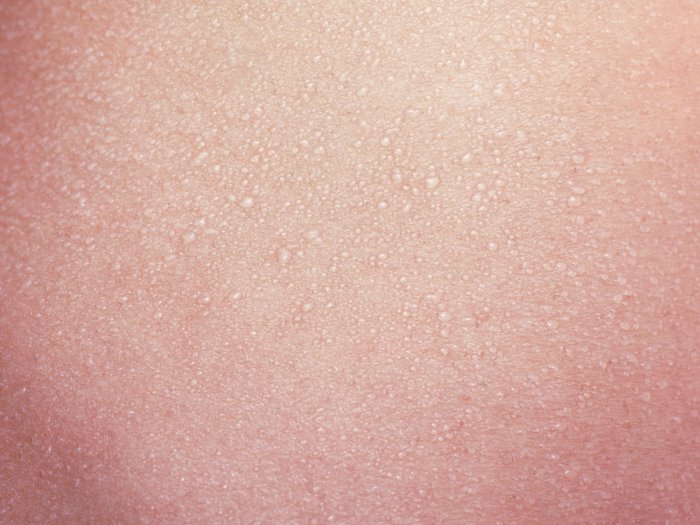Published on
Differential Diagnosis
- Neonatal varicella
- Milia
- Neonatal pustular melanosis
- Miliaria crystallina
- Miliaria rubra

Diagnosis
This patient was diagnosed with miliaria crystallina, also referred to as sudamina. This condition is thought to result from increased hydration compounded by humidity and sweating and occurs due to occlusion of the eccrine ducts at the superficial epidermis or stratum corneum. When the occlusion of the sweat duct is deeper in the epidermis, miliaria rubra (prickly heat), miliaria pustulosa, or miliaria profunda (skin-colored papules with possible associated hypohidrosis or anhidrosis) may result. It may occur at any age but is common in neonates and infants, probably secondary to the immaturity and weakness of the duct structure.
Learnings/What to Look for
- While similar to miliaria rubra (heat rash), which is characterized by small erythematous papules, miliaria crystallina presents as 1- to 2-mm fragile vesicles without an erythematous base.
- Both types of miliaria are benign and the lesions are asymptomatic, with a predilection for the head, neck, and upper torso. These rashes affect up to 40% of infants and typically present in the first month of life
- Predisposing factors include occlusion (excessive clothing or swaddling) and exposure to warm and humid environmental conditions
Pearls for Urgent Care Management
- Miliaria crystallina is self-limiting
- Counsel the caregiver to avoid exposure to heat and occlusive clothing in warmer weather
- Avoid ointments and creams that can further occlude sweat glands
Acknowledgment: Images and case presented by VisualDx (www.VisualDx.com/JUCM).
